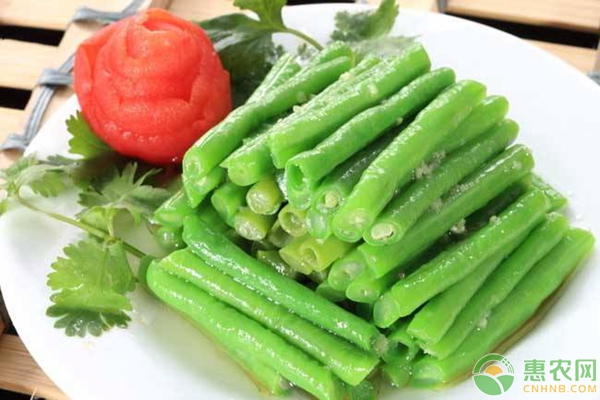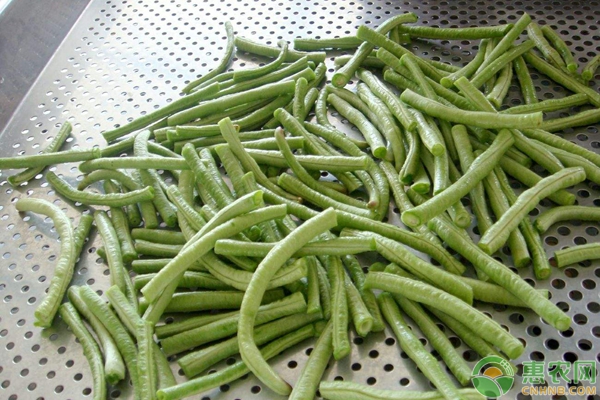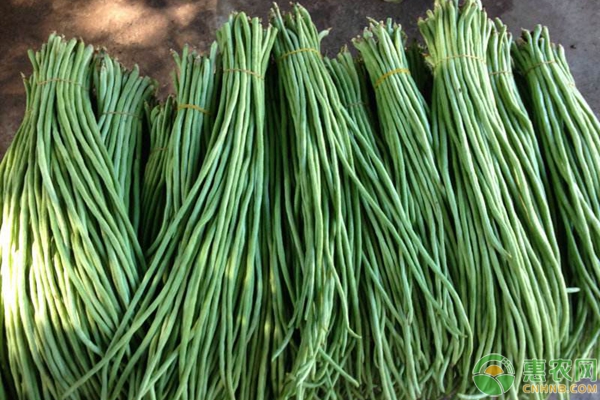Recently, the news about the shortening of the picking period of Hainan cowpea and the premature aging have puzzled many people. We all know that there are many places where there are more beans in Hainan, such as Yacheng, Wanning, Chengmai, Lingshui and Ding'an. Now the biggest problem faced by these growers is the seedling stage, the seedling stage is weak, and the root rot is The phenomenon of dead seedlings caused by blight is also more, especially the wilt of Lingshui is a big problem of cowpea. In addition, it is caused by bad weather such as rain and low temperature, which is more serious. It is worth mentioning that cowpea is in the middle and late growth stages, it is easy to prematurely decay, shorten the picking period of cowpea, greatly reduce the yield, and reduce the economic income of growers. . How was this caused? The following is an analysis of the reasons for shortening and early aging of cowpea picking period with Huinong.com.

First, soil traits
Most of the areas of the beans are planted in the fields, so what is the soil characteristics of the fields?
(1) The mineral composition of the field soil is mainly secondary minerals, including kaolinite, montmorillonite, hydromica and oxides and hydroxides such as iron and aluminum.
(2) Poor ventilation and ventilation: Because clay has small intergranular spaces, it is mostly fine capillary voids and ineffective voids, so it has poor ventilation, poor water permeability, slow internal drainage, and is susceptible to waterlogging and accumulation of harmful substances.
(3) Clay has strong water retention, high water content, more heat, slower temperature rise, slower temperature drop, and small temperature difference between day and night. When the temperature rises in early spring, the soil temperature rises slowly, so it is called “cold soilâ€.
(4) When the clay is dry, it is firm and hard, and when it is wet, the mud is rotten. It is prone to uneven growth of the bean sprouts between the rows, and the growth is weak, and it is easy to infect root rot and blight.
(5) In the seedling stage, the soil temperature is low, the oxygen is less, the effective nutrient is less, the growth is slow, the seedlings are thin and yellow, and there is a phenomenon of “no seedlingsâ€; the cowpea enters the fruiting stage, and it is dry and high temperature, soil compaction, root aging, new The root system is small, the farmers have a large amount of topdressing fertilizer, the damage to the root system, the normal absorption of fertilizer and water, causing root rot caused by root rot, wilt damage the cowpea, and the fertilizer can not supply the nutrients needed for the development of cowpea, leading to premature aging of cowpea. Seriously affect the yield and quality of cowpea.
(6) Clay is rich in nutrients, especially potassium, calcium and magnesium. However, these nutrients are fixed by the soil, the effective nutrient release is less, and the soil aeration is poor, the aerobic microbial activity is inhibited, the organic matter and minerals are slowly decomposed, and toxic substances are easily generated, thereby damaging the growth and development of the cowpea.
Second, management is extensive, improper application of fertilizer and water
Large or excessive application of chemical fertilizers, resulting in deeper soil compaction, destroying soil pH, causing root senescence, destroying root growth and absorption of fertilizer and water, plant thinness, poor growth potential, and the number of flowers and fruits, causing weight on plants, it is easy Premature aging.
Third, the prevention and control of pests and diseases
Such as cowpea rust, leaf mold, powdery mildew, spotted fly and other hazards. Due to improper medication, pests and diseases destroying the leaves, the leaves become yellow and aging, which weakens the growth of the plants, and the cowpeas are prone to premature aging.

Fourth, not timely nutritional supplements
The nutrients required for the growth and development cycle of cowpea are not replenished in time, and the plants may also have premature aging due to the lack of certain or certain elements, such as magnesium, iron, zinc, molybdenum and the like.
Fifth, climatic conditions
(1) Low temperature inhibits root growth, root growth stops, can not absorb fertilizer and water for plant growth and development, coupled with low ground temperature, slow returning to the field, prone to chilling damage, leading to premature senescence of plants, serious or even dead plants;
(2) High temperature also inhibits root growth, browning of roots, few new roots or deformities, unable to properly absorb fertilizer and water, and the fruit is also severely damaged, and plants are prone to premature aging.
Here is a list of reasons why the harvesting period of Chengmai Kidney Beans is shortened and premature aging:
1. Planting in the field, the ditch is not deep enough, the cockroach is not high enough, the humidity in the field is too large, the drainage is not smooth, the gas permeability is poor, the seedlings grow thin and even the root rot is more.
2. Excessive use of chemical fertilizers during the growth period of cowpeas, less organic matter supplementation, excessive soil compaction, and root aging. For example, in March, the whole bean is full of fruit, and the farmers open a mouth on the side of the field for the convenience of irrigation and water. Packed in the oysters, the fertilizer is used to fill the field with water, and the same method is used to supplement the cowpea with fertilizer. Poor drainage in the field, large water content in the field, high humidity, poor soil permeability, root aging, and even root rot, seriously affecting the roots to absorb fertilizer. There is also the activity of seriously inhibiting soil aerobic microorganisms, resulting in the accumulation of harmful substances in the soil and poisonous plants; the leaching and volatilization of fertilizers, uneven fertilizer efficiency, and also destroying the soil, the soil is acidic, and the normal growth of the plants is impaired. Long-term potential, premature aging.

3, 3-4 months, due to drought and high temperature, soil compaction, farmers in order to supplement plant fertilizer, still use fertilizer to flood the field, increase the weight of the root system, plus less heart root group, fertilizer water inhibits plant growth, premature aging.
4. In March, the damage of Liriomyza sativae is very serious. At the same time, leaf mold and rust also harm the leaves. Because of the temporary control of diseases and insect pests, the leaves are seriously damaged, causing premature aging.
5, Hummer is serious, coupled with high temperature, some farmers repeatedly use organic phosphorus, the leaf surface nutrition can not keep up, it also causes damage to the leaves, causing premature aging.
The above is the analysis of the reasons for the shortening and early aging of cowpea picking period compiled by Huinong. I hope to help you.
Nucleic Acid Extraction System
Nucleic Acid Extraction Kit,Nucleic Acid Purification Kit,Nucleic Acid Extraction System,Nucleic Acid Extraction Instrument
Hangzhou DIAN Biotechnology Co., Ltd. , https://www.dianbiotech.com